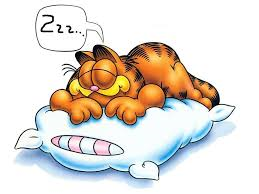Sleep is the most vulnerable thing we can do as human beings.
Besides sex, our beds are meant for sleeping and our bedrooms a safe sanctuary for contentment, and connection. As a healing tool, sleep is considered just as important as nutritional medicine to improve quality of life – yet one third of us grapple with sleep challenges.1 Our sleep environment plays a crucial role that either allows us to surrender to sleep or sabotages our natural biological rhythms and sleep-wake cycles.
A 2021 study exploring modifiable risk factors of insomnia found visible mould and dampness in sleep environments to be a driver of sleep deprivation.2 While mould odour and associated respiratory symptoms trigger sleep disturbance2,3,4, chronic toxigenic mould exposure is shown to impact circadian rhythm; increase natural killer cell activity and hypothalamic-pituitary-adrenocortical axis activity.5,3 Melatonin, a mitigator of oxidative stress and a zeitgeber required to keep our biological rhythms in sync, becomes impeded.6,7 Without allowing for adequate sleep, the cycle of toxic burden is amplified, until the trigger of mould exposure is removed.
Indoor microbial growth with dampness will naturally release volatile organic compounds (VOC’s), invoking compromised air quality and mucous membrane dryness, to negatively impact sleep.3 In addition to VOC’s, other hidden bedroom drivers of chemical exposure can stem from conventional furnishings (from a newly purchased mattress or bedding, to freshly laid carpet or coat of paint) accumulatively emitting solvents, benzenes, herbicides and pesticides – disturbing sleep quality as the body’s detoxification processes are called to respond.8,9
Anything that induces excessive wakefulness of the brain – that engages our stress or inflammatory response, will not be conducive of sleep.
Oxidative stress is attenuated by sleep. Patients experiencing primary insomnia are shown to have significantly lower glutathione peroxidase (GSH-Px) and higher malondialdehyde levels – a marker of lipid peroxidation.2 Genetic SNPs can lead to greater individual susceptibility to compromised production of GSH-Px, creating a greater predisposition for toxic burden.
Sleep is the body’s mechanism to maintain biochemical harmony.7
As bioelectric beings, we are constantly interacting with energy: light, sound, or electromagnetic frequency (EMF) vibrations.4 Sleep disturbance can arise with electromagnetic hypersensitivity9 where the ionising effects of EMF radiation via electronic devices in the bedroom, increase production of free radicals.7
Night-time exposure to artificial light and especially blue light frequency, suppresses melatonin production, delays circadian rhythms, sleep initiation and maintenance.10 Due to their larger pupil size, children have a greater sensitivity to light’s melatonin suppression – vulnerability shown to be twice that of adults.10
Engaging electronic media circumvents psychological sleep processes which may stimulate a stress response incompatible with sleep.7 Its influence on disordered sleep from infants through to adults is further fuelled by the misconception of electronic media as a sleep aid.7
Found to be more conducive of sleep is a nurturing home environment, to feel safe and protected, with a sense of belonging and connectedness, as highlighted by a 2019 study of adolescence and the psychosocial determinants of insomnia.11
While it is difficult to control every exogenous risk factor, when it comes to sleep hygiene we can look at creating a space more encouraging of sleep and contentment by:
- Choosing organic – from your mattress to your sheets [and always wash prior to first use]
- Keeping the bedroom ventilated, opening windows for fresh air or considering a HEPA filter
- Removing problematic furniture / furnishings contributing to chemical toxic burden or exposing new furnishings to sunlight and air (accelerating the process of ‘off gassing’ – heat moves toxins out)
- Creating healthy boundaries with electronic devices and keeping electronics on aeroplane mode when not in active use (including sleep tracking devices)
- Avoiding screen use at least a few hours before sleep; changing settings on screens to avoid blue light emissions or consider blue blocking glasses10
- Turning bedroom electronics off at the power point when not in use and avoid positioning bedheads close to household power boxes on external walls
Article courtesy of BioConcepts. References:
- Morin CM, Bootzin RR, Buysse DJ, Edinger JD, Espie CA, Lichstein KL. Psychological and behavioral treatment of insomnia: Update of the recent evidence (1998-2004). Sleep. 2006;29(11):1398-1414. doi:10.1093/sleep/29.11.1398
- Karunanayake CP, Fenton M, Skomro R, et al. Sleep deprivation in two Saskatchewan First Nation communities: a public health consideration. Sleep Med X. 2021;3:100037. doi:10.1016/j.sleepx.2021.100037
- Janson C, Norbäck D, Omenaas E, et al. Insomnia is more common among subjects living in damp buildings. Occup Environ Med. 2005;62(2):113-118. doi:10.1136/oem.2003.011379
- Wang J, Janson C, Lindberg E, et al. Dampness and mold at home and at work and onset of insomnia symptoms, snoring and excessive daytime sleepiness. Environ Int. 2020;139(March):105691. doi:10.1016/j.envint.2020.105691
- Anyanwu E, Campbell AW, Jones J, Ehiri JE, Akpan AI. The neurological significance of abnormal natural killer cell activity in chronic toxigenic mold exposures. ScientificWorldJournal. 2003;3(2003):1128-1137. doi:10.1100/tsw.2003.98
- Liset R, Grønli J, Henriksen RE, Henriksen TEG, Nilsen RM, Pallesen S. A randomized controlled trial on the effects of blue-blocking glasses compared to partial blue-blockers on sleep outcomes in the third trimester of pregnancy. PLoS One. 2022;17(1 January):1-18. doi:10.1371/journal.pone.0262799
- Samvat R, Osiecki H. Sleep, Health & Conciousness: A Physicians Guide. Bio Concepts Publishing; 2009.
- Sign-up FE, Pizzorno J, Chief E. What Should We Tell Our Patients About Marijuana ( Cannabis indica and Cannabis sativa )? Published online 2019:9-12.
- Lantz S, McIntosh T. One Bite at a Time: Reduce Toxic Exposure & Eat the World You Want.; 2016.
- Higuchi S, Nagafuchi Y, Lee S Il, Harada T. Influence of light at night on melatonin suppression in children. J Clin Endocrinol Metab. 2014;99(9):3298-3303. doi:10.1210/jc.2014-1629
- Hsieh YP, Lu WH, Yen CF. Psychosocial Determinants of Insomnia in Adolescents: Roles of Mental Health, Behavioral Health, and Social Environment. Front Neurosci. 2019;13(August 2019):1-9. doi:10.3389/fnins.2019.00848

